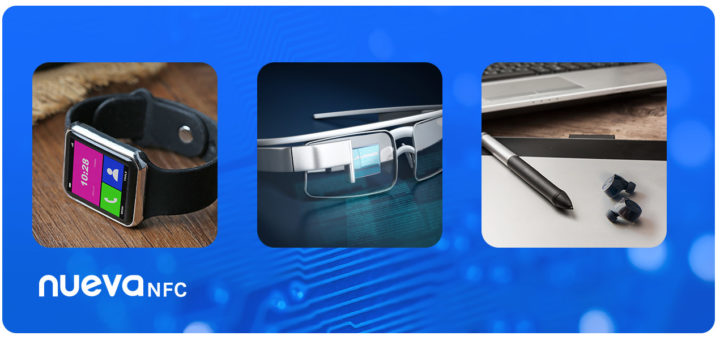The NFC Forum approved the Global Wireless Charging (WLC) specification last year with the new standard making it possible to wirelessly charge small, battery-powered consumer and IoT devices with a smartphone or other NFC charging device at a power transfer rate of up to one watt.
The NFC WLC currently specifies power levels ranging from 100mW – 1W transmitted and data rates up to 106 kb/s, but NuCurrent claims to have gone beyond WLC specs, delivering over 3x more wireless power and over 8x faster data speeds.
This was achieved with the company’s NuEva Development Platform for Near-Field Communication (NFC) Wireless Charging technology that provided up to 3W of power received (as opposed to just transmitted in the WLC specification) and data rates of up to 848 kb/s. NuCurrent expects the higher NFC charging power and data rates to enable new applications for small, space-constrained devices including wrist-wearables, smartwatches, styluses, pinless hearables, and more.
NuCurrent’s NuEva Development Platform is said to be available today to product managers wanting to create NFC WLC or custom NFC Wireless Charging solutions. But when asked about details about the platform, the company was not ready to provide details publicly:
At this time, this is an internal platform only – we do not offer a development kit for sale or use externally. These internal tools (including modeling, simulation, testing, etc.) are what allow us to exceed the WLC specification capabilities referenced in the release. A dev kit may follow in the future, and we’ll be sure to update you when that time comes.
NuCurrent did upload a video about NuEva a few months ago showing the potential applications of the technology based on an NXP chip with chargeable smart glasses, earbuds, and pens.
More details may eventually become available on the company’s website.

Jean-Luc started CNX Software in 2010 as a part-time endeavor, before quitting his job as a software engineering manager, and starting to write daily news, and reviews full time later in 2011.
Support CNX Software! Donate via cryptocurrencies, become a Patron on Patreon, or purchase goods on Amazon or Aliexpress






At which point you would rather implement Qi charging than trying to push NFC?
You cannot transfer data via Qi. The most important application of that “beyond NFC” I can think of are smarter smart cards, using more complex, thus more power-hungry electronics to perform multi-factor authentication on their own before releasing information that host asked for.
At the point you are putting in a couple of watts you can probably spare some for BLE communication, which should be faster than NFC. I guess the only thing NFC has is that it is designed to be powered by phones, so likely to be common. But if you’re gonna go with a custom solution, I don’t see many downsides for using Qi+BLE.
Qi+BLE can be a possibility for certain device types, but in many cases (especially wearables) there’s not enough space to accommodate the needed diameter of a Qi antenna. Separately, for devices that already have NFC in place for data, the cost can be substantially less than adding BLE.
But that may be more expensive and you want the smart cards to be cheap. Also BLE is designed for different purposes so it has different threat model etc.